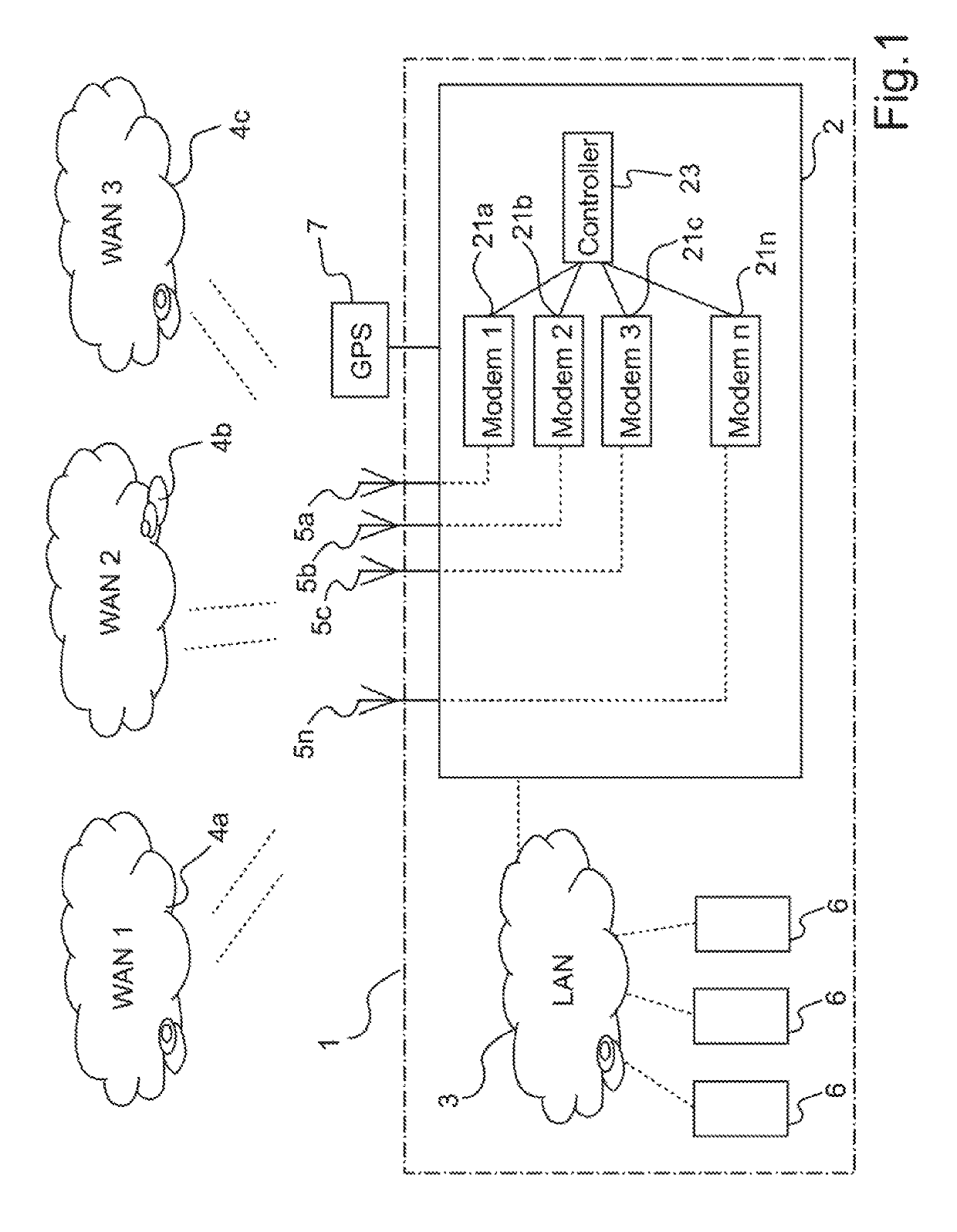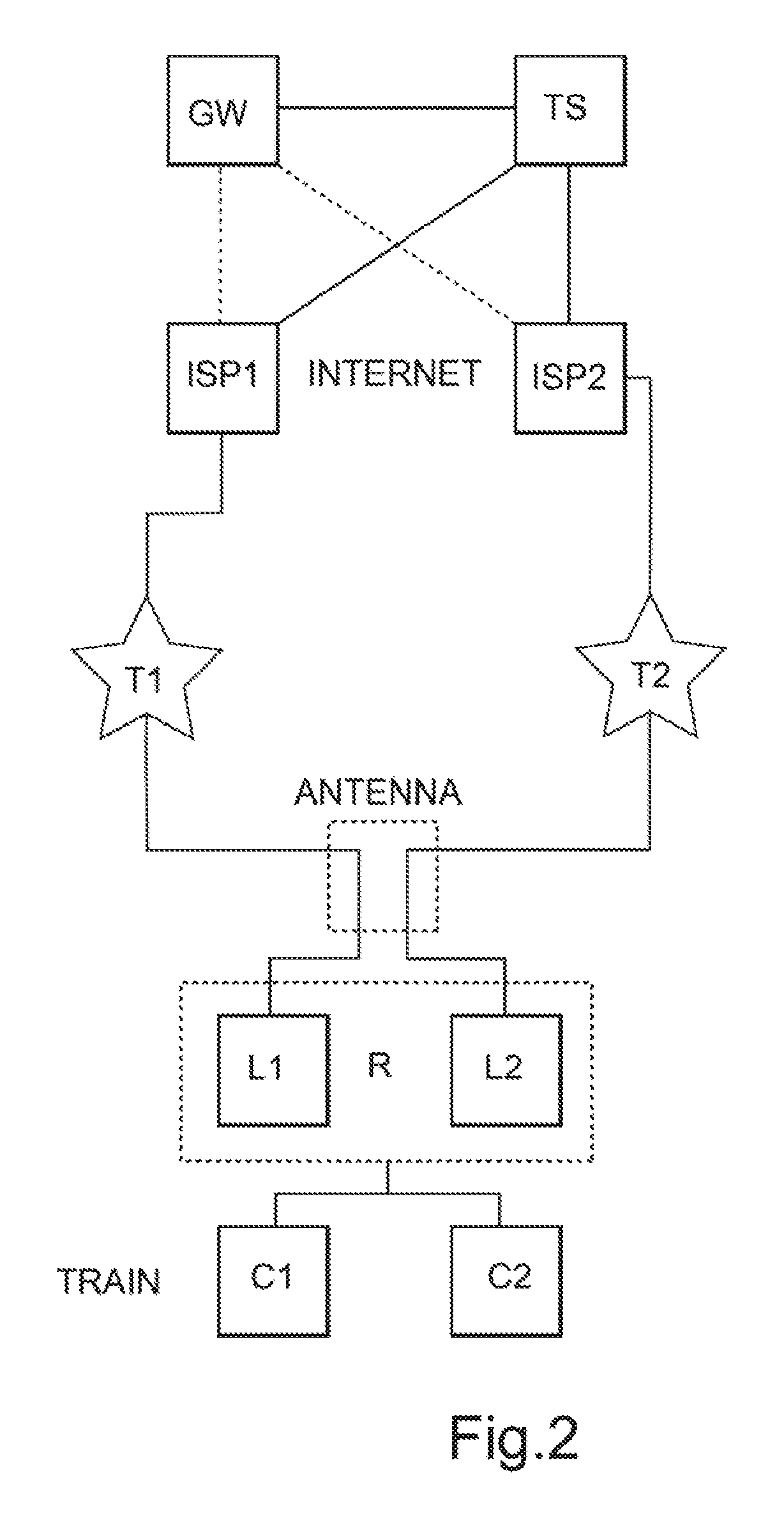Method and system for dynamic selection of communication paths for a moving vehicle
a dynamic selection and communication path technology, applied in data switching networks, transportation and packaging, assess restrictions, etc., can solve the problems of large number of cellular network hand-overs, difficult to obtain direct communication between terminal antennas within the carriage and externally located antennas, and strain on the wireless network infrastructure. , to achieve the effect of reducing the tendency for bottlenecks and mitigating the effects of bottlenecks
- Summary
- Abstract
- Description
- Claims
- Application Information
AI Technical Summary
Benefits of technology
Problems solved by technology
Method used
Image
Examples
Embodiment Construction
[0046]In the following detailed description, preferred embodiments of the present invention will be described. However, it is to be understood that features of the different embodiments are exchangeable between the embodiments and may be combined in different ways, unless anything else is specifically indicated. Even though in the following description, numerous specific details are set forth to provide a more thorough understanding of the present invention, it will be apparent to one skilled in the art that the present invention may be practiced without these specific details. In other instances, well known constructions or functions are not described in detail, so as not to obscure the present invention. In the following examples, an embodiment related to a train is disclosed. However, it is to be acknowledged by the skilled reader that the method and system are correspondingly useable on other moving vehicles, such as buses, ferries, airplanes and the like.
[0047]In FIG. 1 a schem...
PUM
 Login to View More
Login to View More Abstract
Description
Claims
Application Information
 Login to View More
Login to View More - R&D
- Intellectual Property
- Life Sciences
- Materials
- Tech Scout
- Unparalleled Data Quality
- Higher Quality Content
- 60% Fewer Hallucinations
Browse by: Latest US Patents, China's latest patents, Technical Efficacy Thesaurus, Application Domain, Technology Topic, Popular Technical Reports.
© 2025 PatSnap. All rights reserved.Legal|Privacy policy|Modern Slavery Act Transparency Statement|Sitemap|About US| Contact US: help@patsnap.com


